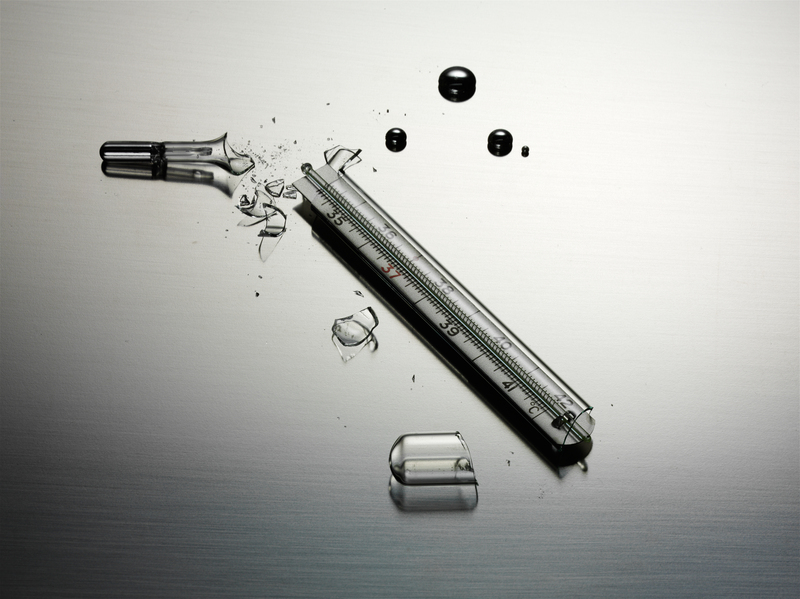How to Organize PPE Waste Collection in Your Neighborhood
The global COVID-19 pandemic brought Personal Protective Equipment (PPE) such as face masks, gloves, and face shields into our daily lives. While these items protect public health, improper disposal can harm our environment and pose health risks. If you're wondering how to organize PPE waste collection in your neighborhood, you've come to the right place! This comprehensive guide will walk you through step-by-step methods to launch an effective, safe, and community-driven PPE disposal program in your area.

Understanding the Importance of Proper PPE Waste Disposal
Before you start a PPE waste collection initiative, it's important to understand why responsible management of used masks, gloves, and other equipment matters. PPE litter is not just unsightly--it can spread pathogens and endanger sanitation workers, wildlife, and community health.
- Hygiene and Health Risks: Used PPE items may carry viruses or bacteria, increasing the chance of infection spread if handled improperly.
- Environmental Impact: Masks and gloves, often made with plastics, persist in the environment for years, contributing to microplastic pollution and harming animals.
- Clogged Sewers and Drains: Carelessly discarded PPE can block urban drainage systems, leading to flooding and water contamination.
By organizing PPE waste collection in your neighborhood, you help protect both your community and the planet.
Step 1: Build Awareness in Your Community
Start With Education Campaigns
The first step in any successful **PPE waste management plan** is community education. People may not be aware of the risks or the proper way to dispose of masks and gloves.
- Design informative flyers or posters highlighting the importance of safe PPE disposal.
- Host virtual or in-person talks explaining the dangers of PPE littering.
- Utilize local social media groups to share tips and updates about your PPE collection efforts.
- Partner with local schools or youth clubs to spread awareness among younger generations.
Step 2: Form a Neighborhood PPE Waste Task Force
Gather a Team of Volunteers
No one can do it alone! Reach out to neighbors, friends, or local organizations interested in environmental initiatives. Form a dedicated team or committee to manage roles such as:
- Publicity and awareness
- Collection logistics
- Tracking and reporting
- Coordination with local waste authorities
Tip: Involving local leaders or respected figures can boost participation and credibility.
Step 3: Set Up Suitable PPE Waste Collection Points
Choose Strategic Locations
Location matters when you're planning PPE waste collection in your neighborhood. Select easily accessible spots such as:
- Neighborhood community centers
- Park entrances or exits
- School gates
- Apartment complex entrances
- Local shops or pharmacies (with permission)
Install Proper Bins and Signage
Using dedicated, clearly marked bins is critical. Here's how to do it right:
- Use sturdy, leak-proof, and covered containers to avoid exposure.
- Label bins with bold, waterproof signs: PPE Waste Only.
- Position bins where people are likely to finish using PPE--near public transit, entrances, or exits.
- Provide instructions on how to safely deposit used PPE (e.g., place in a bag first, do not overfill).
If possible, choose bright-colored bins to make them easy to spot.
Step 4: Develop a PPE Waste Collection Schedule
Organize Regular Pickups
Consistency is key for effective face mask and glove waste collection. Develop and publicize a regular schedule. Here's how:
- Coordinate with your local waste management authority for frequent pick-ups.
- If official support is unavailable, arrange a rotation of trained volunteers for collection and safe interim storage.
- Clearly communicate collection days to the neighborhood through flyers, social media, or messengers.
Ensure Safe Handling Procedures
Safety of volunteers and sanitation workers should be prioritized at every step. Adhere to these safety measures:
- Provide volunteers with gloves, masks, and hand sanitizer.
- Ensure waste handlers do not touch PPE waste with bare hands.
- Train team members on correct donning and doffing techniques for protective equipment.
Step 5: Work with Local Authorities
Partner Up for Efficiency
City councils or local sanitation services may already have PPE recycling or disposal protocols in place. Partnering can:
- Simplify final disposal--avoid illegal dumping or burning.
- Provide access to certified incineration (the safest method for contaminated PPE).
- Increase the credibility and reach of your program.
Contact your town hall, waste authority, or health department. Ask for advice, resources (like bins or signage), and possible collection service integration.
Step 6: Publicize Your PPE Collection Program
Spread the Word Locally and Online
Strong communication ensures success. Publicize your program by:
- Distributing flyers and posting on community bulletin boards
- Sharing news on neighborhood social media platforms
- Encouraging local influencers or leaders to talk about PPE waste management
- Hosting neighborhood PPE collection days or cleaning events
*Use before-and-after images* of cleaned areas to show impact!
Tip: Create a catchy campaign hashtag to encourage social media sharing and community pride.
Step 7: Safely Dispose or Recycle Collected PPE Waste
Best Practices for Final Disposal
Proper final disposal is crucial. The ideal process involves:
- Securing the PPE waste in heavy-duty, sealed bags
- Transporting everything directly to official hazardous or medical waste handling facilities
- Following government guidelines for incineration or chemical disinfection
*Never dispose of PPE waste in standard recycling or compost bins as it may contaminate regular waste streams.*
Can PPE be Recycled?
Currently, most worn PPE, especially masks and gloves, cannot be recycled with standard plastics due to contamination risks. However, specialized companies are innovating to recycle certain types of PPE.
- Research local specialist recycling programs
- Start pilot programs with these companies if available
- Encourage manufacturers to develop sustainable, recyclable PPE alternatives in the future
Step 8: Monitor, Report, and Improve Your PPE Waste Collection Efforts
Track Progress and Share Results
Effective waste management relies on tracking and adapting. Maintain records such as:
- Frequency and quantity of PPE waste collected
- Areas with higher waste generation
- Community participation statistics
- Any safety incidents or near misses (to improve training)
Share milestones and results in newsletters, online updates, or community meetings. This transparency boosts motivation and encourages ongoing involvement.
Seek Feedback and Continuously Adapt
Ask for feedback via surveys or suggestion boxes--both online and near collection points. Adapt your plan based on:
- Changing community needs
- Feedback about convenience and safety
- New regulations or recycling opportunities

Tips for a Sustainable and Safe PPE Collection Program
- Engage Youth and Schools: Involve students in awareness drives and neighborhood clean-ups.
- Utilize Local Media: Share stories and successes with local news outlets for expanded reach.
- Incorporate COVID-19 Precautions: Update safety protocols with up-to-date pandemic guidance.
- Recognize Volunteers: Celebrate your team's efforts with small rewards or recognition certificates.
- Promote Responsible Alternatives: Encourage reusable masks where appropriate, and proper washing guidelines.
Conclusion: Every Neighborhood Can Make a Difference
By following these guidelines on how to organize PPE waste collection in your neighborhood, you protect your community, support public health, and shield the environment from plastic pollution.
The key is to engage your neighbors, educate all age groups, provide clear and safe collection points, and work in partnership with local authorities. With commitment and cooperation, your neighborhood can set an example--and inspire others to start their own PPE waste management programs.
Remember: Safe disposal of PPE is an ongoing responsibility. Start your local PPE waste collection project today--and make a lasting positive impact for both people and the planet!
```